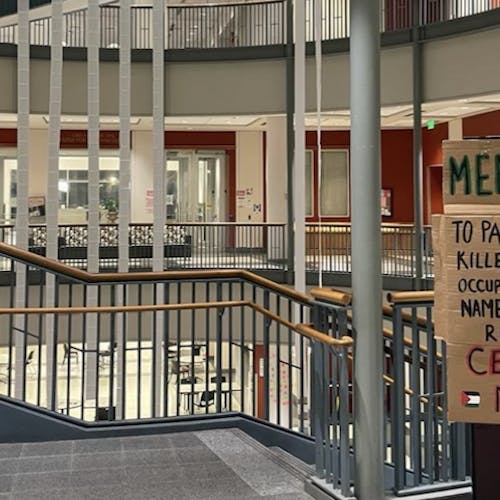Kirkpatrick Chapel listed as one of most beautiful college religious sites

Standing on campus since 1873, the non-denominational Kirkpatrick Chapel, standing near Old Queens on the College Avenue campus, has not only brought University students culture, religious service and social service, but has now also achieved status on a list of the "50 Most Amazing College Chapels and Churches."
According to research by Theology Degrees, a website dedicated to ranking and evaluating theological and religious-based academia, Kirkpatrick Chapel, funded by a generous gift of $61,054.57 and designed by Henry Janeway Hardenbergh, the first president of Rutgers, ranked as the 10th “historically significant and aesthetically pleasing houses of worship” in the United States.
A few buildings leading Kirkpatrick Chapel on the list were Rudolph Tuskegee Chapel at Tuskegee University, Old St. John’s at Fordham University, Dahlgren Chapel of the Sacred Heart at Georgetown University, Marsh Chapel at Boston University and Benjamin Brown Graham Chapel at Washington University in St. Louis.
“(Kirkpatrick Chapel) is an excellent example of High Victorian Gothic ecclesiastical architecture … and the chapel’s stained glass windows contain some of the first opalescent and multicolored sheet glass manufactured in America,” the New Jersey Historic Trust noted on the chapel’s website.
The factors considered and used to determine the status in the study were architectural style, historical value, social and community influence, involvement and impact on student life, according to Theology Degrees’ website.
“(The chapel) was initially designed to be the chapel and main library for Rutgers,” said Patrick Cogan, operations manager of Kirkpatrick Chapel. “The bulk of the building was used for chapel purposes, and about a quarter of it was used as the main library.”
After about 24 years, around 1903, when the Voorhees Library was built, all the books were moved over to cross the new library, Cogan said. The wall separating the chapel and library in Kirkpatrick Chapel was then demolished, extending the area exclusively for chapel purposes.
Cogan said for about the first 50 years, the chapel was used for daily religious worship services for the men of Rutgers College, but the chapel was later used less often for regular worship services.
Today, Cogan said the chapel is rented for various events, such as weddings, baptisms, memorials and concerts.
It is primarily used to serve as a venue for occasions such as weddings, performances by many of the University’s choirs and chorus groups, Rutgers Glee Club, as well as for the Mason Gross organ students to practice and perform, Cogan said.
As a venue, Kirkpatrick Chapel, with its chairs, instruments, paintings and stained glass windows is "colorful," said Elizabeth Lindh, a preservation architect in the University Architect’s Office.
Lindh also pointed out the large and pointed entrance window, which vibrantly depicts the signing of the Queen’s College Charter on Nov. 10, 1766.
The other windows nestled into the walls were gifted by one of America's most acclaimed artists, Louis Comfort Tiffany, vice president and art director of jewelry company Tiffany & Co. and an American artist and designer best known for his stained glass, Lindh said. Tiffany crafted, framed and gifted four windows around the turn of the 20th century.
The windows used a varied palette with rich and intense hues to depict a variety of subjects such as typography, moments in history, nature and prints, Lindh said.
Having previously visited the chapel, Yasmeen Elsakary, an Ernest Mario School of Pharmacy first-year student, said she thinks the weight of having beautiful and historical buildings on campus plays a role in reminding students how tiny they are in “the big scope” of Rutgers’ history.
“Unlike other buildings on campus, the Kirkpatrick Chapel is very unique and there’s something about it,” she said.



